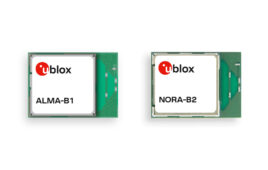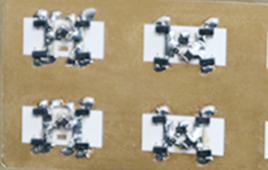The MIPI Alliance, an international organization that develops interface specifications for mobile and mobile-influenced industries, today released MIPI I3C Basic v1.0, a subset of the MIPI I3C specification that bundles the most commonly needed I3C features for developers and other standards organizations.
Released in January 2017, MIPI I3C v1.0 streamlines and advances interface technologies for connecting processors, sensors and many other devices that had previously used I2C (Inter-Integrated Circuit), the de facto standard for over 35 years. MIPI I3C Basic v1.0 provides 20 key features from MIPI I3C, including:
- Backward compatibility with I2C
- A multi-drop bus that, at 12.5 MHz, is over 12 times faster than I2C supports while using significantly less power
- In-band interrupts to allow slaves to notify masters of interrupts, a design that eliminates the need for a separate general-purpose input/output (GPIO) for each slave and thus reduces system cost and complexity
- Dynamic address assignment to avoid conflicting static addresses, providing flexibility and pin savings
- Standardized discovery, and bus configuration and control
- Uses standard low-cost pads and requires minimal cost in logic to support
“We have seen tremendous interest in I3C from the mobile ecosystem. Now, with I3C Basic, the broader developer community can immediately and efficiently begin using these capabilities as an alternative to I2C,” said Joel Huloux, chairman of MIPI Alliance. ”In addition, we are already working with several standards organizations to integrate I3C Basic into their specifications. We believe it provides tremendous value to mobile and many other industries in multiple ways. For example, as the IoT market expands, it will serve a growing need to transfer data collected from a wide range of mechanical, environmental, biometric and health sensors.”
Additional Functionality Offered with MIPI I3C v1.0
MIPI I3C Basic is available for implementation without MIPI membership and is intended to facilitate a royalty-free licensing environment for all implementers, as described within the specification. Companies interested in implementing additional functionality (e.g., timing control, HDR Double Data Rate Mode) offered with MIPI I3C v1.0 may join MIPI Alliance for access to the specification and member IPR licensing, and to participate in specification development activities, interoperability workshops and other events.
“MIPI I3C has been a springboard for innovation within MIPI, as its capabilities have been integrated into multiple new specifications,” said Ken Foust, chair, MIPI I3C Basic Ad Hoc Working Group. ”With this broader release it can now serve as a catalyst for innovation in industries well beyond mobile, allowing them to openly adopt and embrace the advantages that I3C offers over I2C.”
MIPI member companies that participated in the development of MIPI I3C Basic v1.0 include: Analogix Semiconductor, Inc.; Cadence Design Systems, Inc.; Intel Corporation; Introspect Technology; InvenSense, Inc.; L&T Technology Services; Lattice Semiconductor Corp.; NXP Semiconductors; STMicroelectronics; Synopsys, Inc. and others.
MIPI I3C Basic Resources
In conjunction with the I3C Basic release, MIPI has also published a new application note, “System Integrators Application Note for I3C v1.0 and I3C Basic v1.0,” that provides implementation guidance. Additional resources may be found at http://bit.ly/2B6Dxd7.



